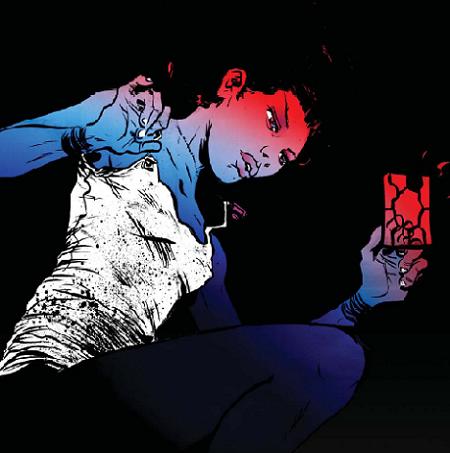Images & Words – THB: Comics from Mars #2
[images & words is the comic book pick-of-the-week at OL. equal parts review and diatribe, the post highlights the most memorable/infuriating/entertaining book released that wednesday]
I’ve spent the last ten minutes gazing into this goddamn word processor. It’s white and bright and winning this staring contest with ease. Fugger! It’s not fair — he’s got pixels and electricity and all I’ve got is the soft gelatin of these dull cow eyes. My retinas will burn out before I think of a clever way to convey my message, so I might as well just lay it out there.
Paul Pope is a master comics creator. And he’s grossly underappreciated.
Those curious about Pope should refer to THB: Comics from Mars #2.
This comic, released by AdHouse Books as a Baltimore Comicon exclusive, is essentially a crash course in the artist’s work. While it’s branded as being a part the THB universe, the issue consists of six stand-alone shorts. By reading through all six, a reader glimpses some of the different styles and tones the artist can produce. However, each of the stories is also connected by a sense of otherworldiness, as though what’s happening is plausible — just not under normal conditions.
Well, normal Earth conditions. Which, when you think about it, don’t seem too normal at all.
So, what’re some highlights of THB: Comics from Mars#2? Well, one of them is most certainly The Masked Karimbah. This story chronicles the battle between the titular hero and El Pollo Diablo. In the course of eight pages, a chicken and what looks like a masked rodent throw fists, feet, elbows and even furniture at one another. The reason? Karimbah has come on the behalf of the T-City Death Club, who are repossessing El Pollo Diablo’s membership skull-ring for dereliction of duties.
Yeah, it’s insane.
Executed just as well, if not more coherently, is Max Maximus, Wildman of the Martian Wasteland. With no more than seven panels Pope envisions a Mars that resembles the Wild West. When Mad Maximus enters the Cantina steaming mad that somebody painted his spaceship pink, he gets some definitive answers. Hilarious answers.
But the best tale is 1977, a comic with more heart in four pages than others can achieve with entire volumes. In what I’m guessing is a semi-autobiographical yarn, a small boy is awed by the sounds of The Rise and Fall of Ziggy Stardust and the Spiders from Mars. The child finds the album astonishing, listening to it until his mother has to pull him away. He then asks his mother if Ziggy Stardust is actually a Martian; she informs him that Ziggy Stardust is actually David Bowie (is actually David Jones). The boy understands, but can’t help stop himself from looking to the stars with a sense of wonder.
And that is the very purpose of art. We conjure up fictions not for the purpose of distracting, but for instilling. Planting ideas in the hopes that seeds will take root. Maybe, just maybe, what we have to imagine today we can experience tomorrow.
Is there a greater power than being able to making a person step back and think What if?
I wouldn’t try to tell you that THB: Comics from Mars #2 is the greatest comic of all time. Hell, it’s not even (close to) the best Paul Pope comic. But for the uninitiated, it’s a tasty sampler platter. For those of us who already believe in Pulphope, it’s something to hold us over until the release of more highly-anticipated projects.
If you find this comic in your local store, do not hesitate to purchase it. Otherwise, you’ll have to purchase online (as I did) or hunt it down once it sells out.
I just looked out my window. Above the suburbs. Past the atmosphere. Beyond the satellites. To the stars. I’m wondering, as did Bradbury and Bowie and Pope, if there is life on Mars. I’m inclined to say no.
Not yet.





